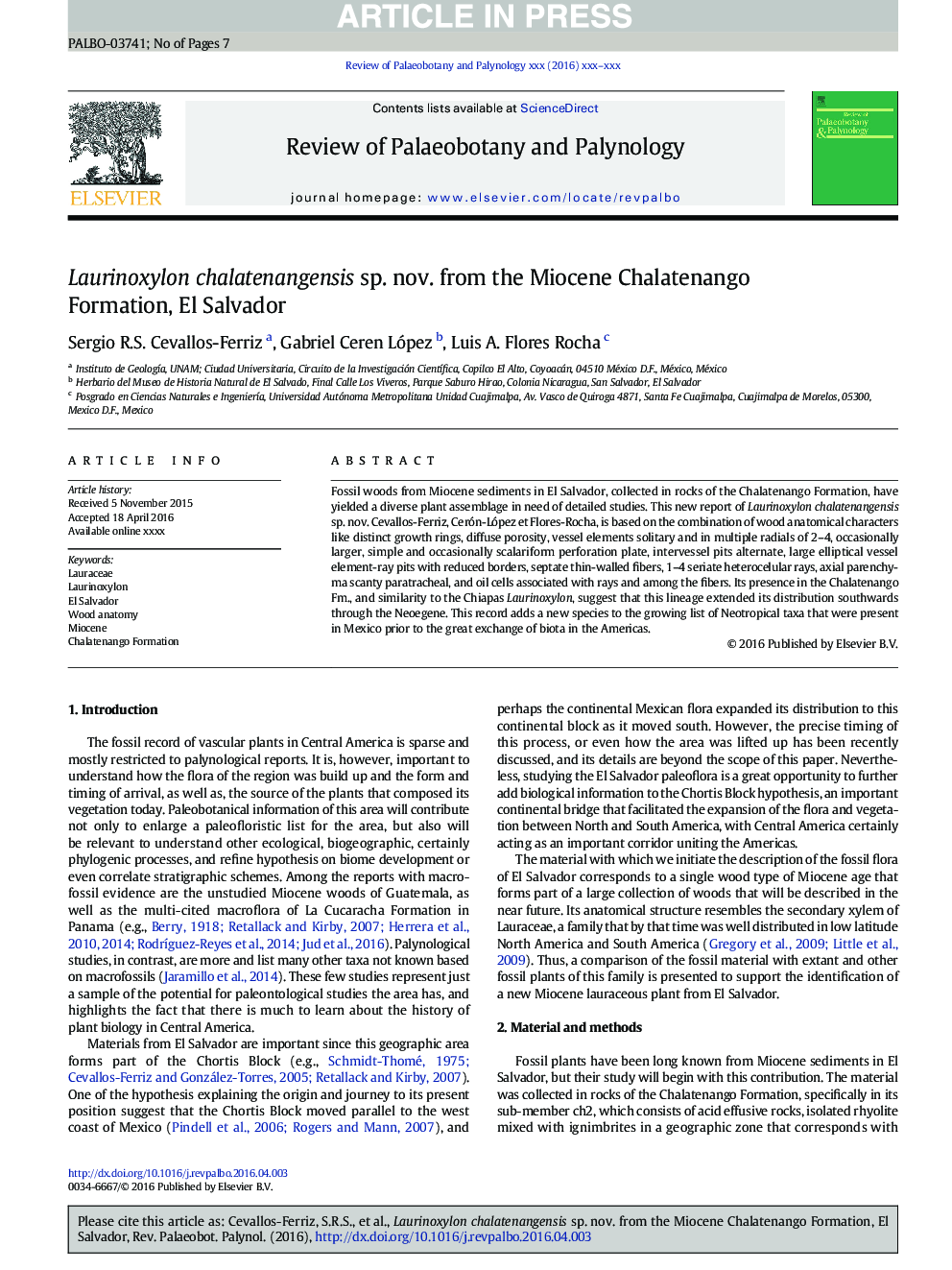| Article ID | Journal | Published Year | Pages | File Type |
|---|---|---|---|---|
| 4750054 | Review of Palaeobotany and Palynology | 2016 | 7 Pages |
Abstract
Fossil woods from Miocene sediments in El Salvador, collected in rocks of the Chalatenango Formation, have yielded a diverse plant assemblage in need of detailed studies. This new report of Laurinoxylon chalatenangensis sp. nov. Cevallos-Ferriz, Cerón-López et Flores-Rocha, is based on the combination of wood anatomical characters like distinct growth rings, diffuse porosity, vessel elements solitary and in multiple radials of 2-4, occasionally larger, simple and occasionally scalariform perforation plate, intervessel pits alternate, large elliptical vessel element-ray pits with reduced borders, septate thin-walled fibers, 1-4 seriate heterocelular rays, axial parenchyma scanty paratracheal, and oil cells associated with rays and among the fibers. Its presence in the Chalatenango Fm., and similarity to the Chiapas Laurinoxylon, suggest that this lineage extended its distribution southwards through the Neoegene. This record adds a new species to the growing list of Neotropical taxa that were present in Mexico prior to the great exchange of biota in the Americas.
Related Topics
Physical Sciences and Engineering
Earth and Planetary Sciences
Palaeontology
Authors
Sergio R.S. Cevallos-Ferriz, Gabriel Ceren López, Luis A. Flores Rocha,
